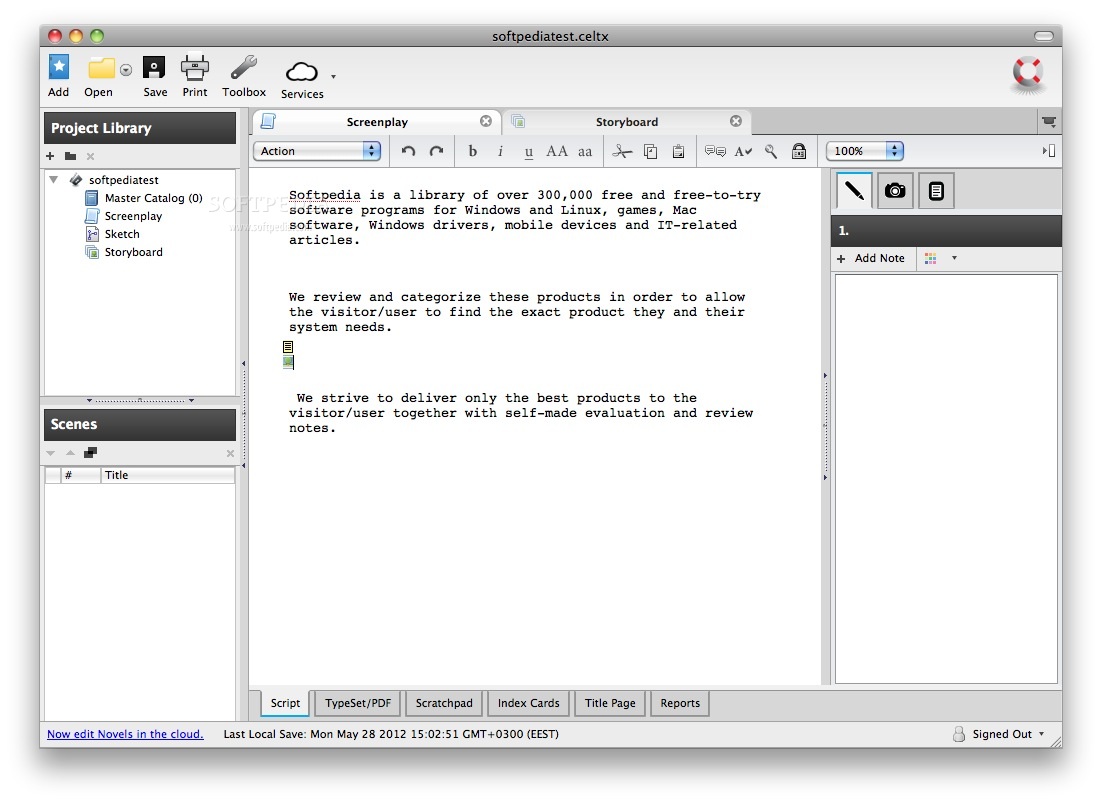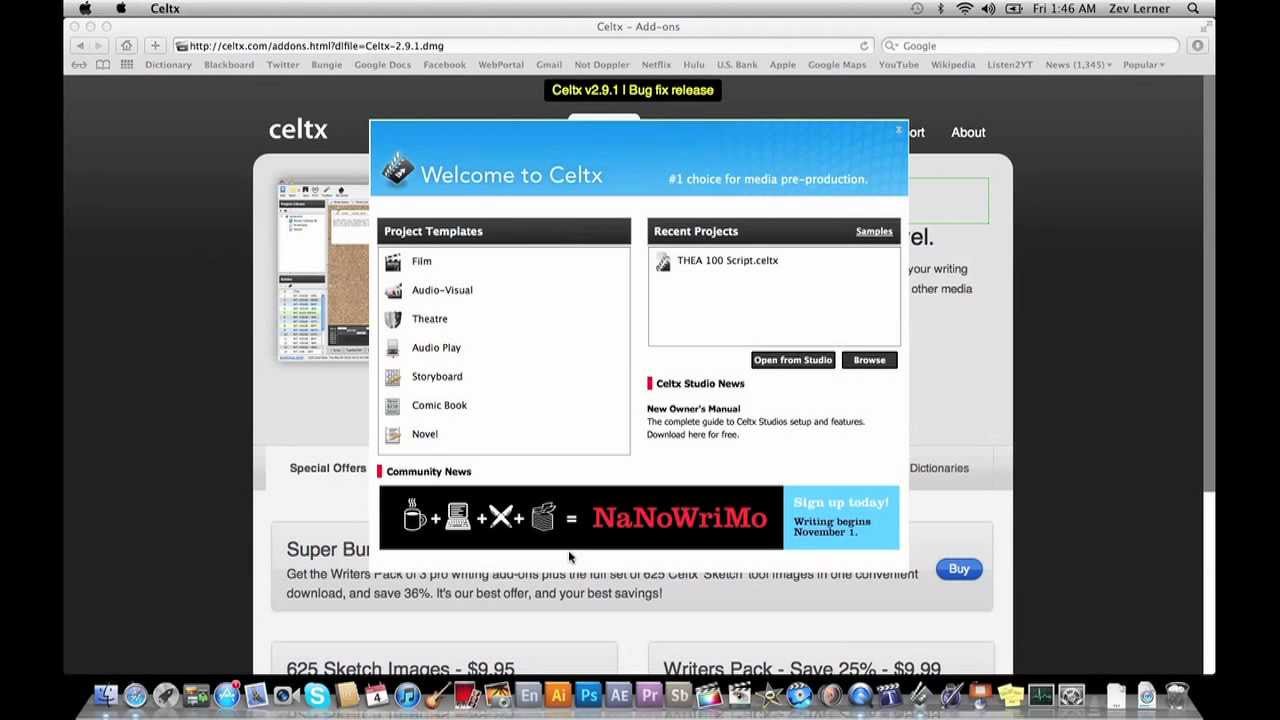



Alternatively you can move your cursor to the front of the scene heading line and then press the left arrow key while holding shift. TextEdit doesn’t allow us to see the “invisible” text return characters but they’re there nonetheless.Ĭopy one line return character by click-dragging with your mouse from the beginning of the scene heading line to the end of the line above. The way we’re going to do that is we paste a “line return”-character in the “Replace” box IN FRONT of the “EXT.”. We also need to tell TextEdit that we want a line return before every external scene. What that will do is look for all our external scenes. Hit Cmd-F to open the “Find” bar up top and activate the “Replace” checkbox to reveal the “Replace” box underneath. It would be tedious work to do that manually so we’ll use the “Find and Replace” function. What we need to do is get extra lines in between scenes to help Final Draft figure out where one scene ends and the other begins. Since every element has it’s extra line without any double line spacing in between scenes Final Draft would not recognize single scenes. Now, what we need to do is the following. Automatically Add Extra Lines At Scene BreaksĪlright. If you use *.txt format here your script will look like this:ģ.
CELTX FILES MAC
I’m using TextEdit on the MAC in this case. Copy the text to the clipboard by pressing Cmd-C or Ctrl-C.įire up your text editor. Select the entire text by pressing Cmd-A (MAC) or Ctrl-A (PC).
CELTX FILES SOFTWARE
And it is absolutely FREE and without any additional software that you not already own. This way is a bit more tricky, but still possible relatively easy. Select the entire text (Cmd-A or Ctrl-A) and copy-paste it into the Celtx online script interface. Open the *.txt file in a text editor (e.g. Final Draft to CeltxĮxport your script as a *.txt file from Final Draft via the File – Export… dialog. Let me quickly explain the process of getting files FROM Final Draft INTO Celtx, which is very simple. The only way you can get your script out of Celtx is as a pdf.īut there is a workaround, which I will share with you here. The reason being that Celtx no longer exports *.txt files. Since Celtx Studio has changed from an offline-only application to being a complete online based system, converting files to Final Draft from inside Celtx has become less straight forward. Tip: Try to open the CELTX file using a text-editor such as Notepad, as many file types contain simply contain unformatted plain-text and can viewed correctly using this method.Convert Celtx to Final Draft and Vice Versa Please check back soon for more information as we are constantly updating our file descriptions based on search frequency.

We have yet to investigate this file type further, or there was not enough information available at the time to report accurately on the format. This data file format was added to our database by a visitor to this site, but no additional information was provided. If you are unable to open the file this way, it may be because you do not have the correct application associated with the extension to view or edit the CELTX file. The best way to open an CELTX data file is to simply double-click it and let the default assoisated application open the file. If you are aware of any additional file formats that use the CELTX extension, please let us know. CELTX extension are known as Celtx Project files, however other file types may also use this extension. Have you found, downloaded or received an CELTX file, but don't know which software program is required to open it?īefore attempting to open an CELTX file, you'll need to determine what kind of file you are dealing with and whether it is even possible to open or view the file format.Īnswer: Files which are given the.


 0 kommentar(er)
0 kommentar(er)
